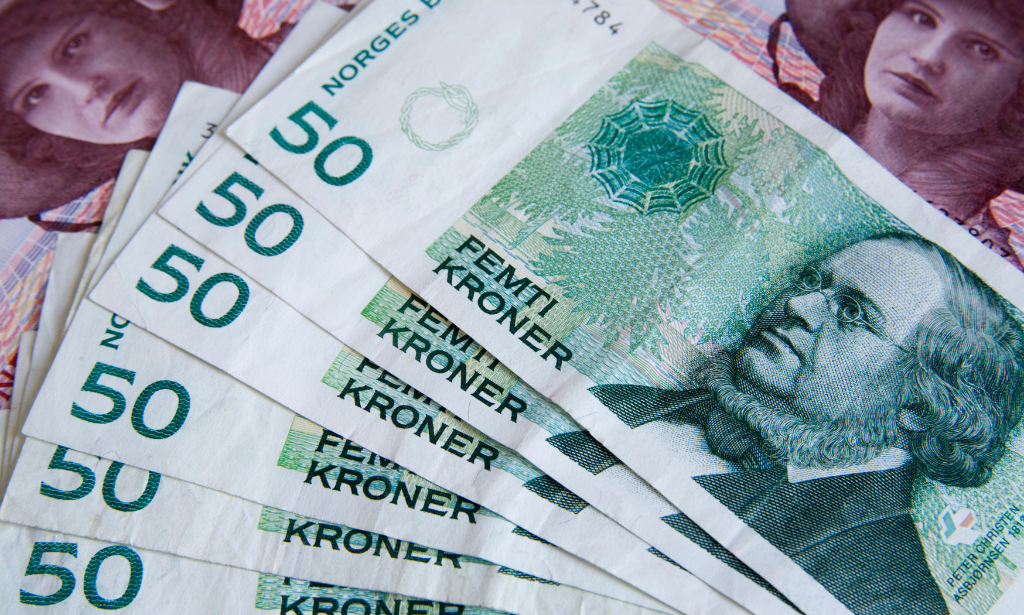The Norges Bank hiked the deposit rate by 25bps to 4.5% at its December meeting, defying the market consensus and our own call for the Bank to hold rates for the second consecutive time.
That said, we suspected today’s announcement was likely balanced on a knife edge, having highlighted risks that the weak krone and a stronger inflation outlook could see one final hike from the Norges Bank, especially given prior guidance that a rate hike this month was more likely than not. Whilst this guidance was subsequently dialled back at November’s policy meeting, officials continued to stress data dependency in their decision making. Despite inflation appearing on track to undershoot the Norges Bank’s prior forecast, risks of higher imported inflation stemming from recent NOK weakness led the Bank to upgrade its forecasts for price growth, and policymakers to deliver on their promise of a final rate hike heading into Christmas. Following today’s decision, we now anticipate a prolonged hold in rates, in line with new guidance from the Norges Bank, with cuts unlikely to take place until the second half of next year.
Data suggested the Norges Bank was set to hold rates
Heading into this latest policy decision, the stage had seemed set for the Norges Bank to stand pat, awaiting more data before committing to any further policy tightening. In particular, whilst the October CPI surprised sharply to the upside, growing 1.0% MoM, November’s figures did the opposite, albeit not by quite so much, rising by 0.5% MoM to print 0.2pp below expectations. This left annual inflation figures running at 4.8% and 5.8% for headline and core inflation respectively. Given that the Norges Bank’s September forecasts saw Q4 inflation running at 5.2% and 5.9% for headline and core, and momentum in price growth broadly easing, this meant that inflation was highly likely to undershoot the Bank’s previous projections.
Moreover, Norges Bank policymakers have proven responsive to CPI prints that land off-consensus immediately before policy meetings this year. Given a downside inflation surprise and slowing growth momentum, all the conditions seemed present for a hold in rates.
This seemed to be the direction of travel indicated at the November policy meeting too, Having previously signalled a final rate hike at this meeting was more likely than not, Governor Ida Wolden Bache notably pulled back on this messaging at the November meeting, leaving any decision over a final rate hike in the balance. Admittedly, domestically driven inflation remains a concern for the Norges Bank, though recent inflation and labour market developments suggested monetary policy was well calibrated to eventually return inflation back to 2%.
But the weak krone proved the decisive factor
The one factor we thought might tip the balance was the ongoing slide in the krone, which mechanically raises imported inflation pressures. That said, this was notably touched upon in a speech by the Governor on November 9th, appearing to suggest to us that whilst a temporarily weaker krone might add to inflation in the short run, this would not necessarily influence monetary policy.
Given this, we had been inclined to discount the current exchange rate leading into this decision, expecting policymakers to look through the current bout of oil-induced krone weakness. Clearly that has not been the case, with policymakers specifically highlighting krone weakness as underpinning the need to further hike rates.
This line of thinking was also visible within the Bank’s internal models, which now feature an extended period of krone weakness. This seems to be responsible for the marginal upgrade to both the 2024 and 2025 inflation forecasts, with other significant conditioning factors unchanged or weighing against future inflation.
Despite today’s off-consensus decision, the Norges Bank’s hawkish tone appears to have had the desired effect
The krone has rallied sharply post-announcement, with the EURNOK rate currently 1.75% weaker than it was first thing this morning. That said, we don’t expect the Bank to deliver another hawkish surprise this cycle. Policymakers strongly signalled that today’s rate is the final one, with rate cuts likely to begin in Autumn 2024, a view we share. If anything, we see risks as skewed towards a more rapid policy easing, especially given that slowing growth in the eurozone is likely to weigh on the Norwegian economy, and our view that inflation pressures should soften a little quicker than policymakers currently anticipate. In particular, we think concerns about NOK weakness are likely to moderate moving forwards, especially given our view that oil prices have now likely bottomed out.
With the likely timing of rate cuts being brought forward for other DM central banks, especially at the Fed and the ECB, rate differentials should prove supportive for the krone into next year too, suggesting that early 2024 should see a strong krone recovery.
Author:
Nick Rees, FX Market Analyst
 Login
Login
